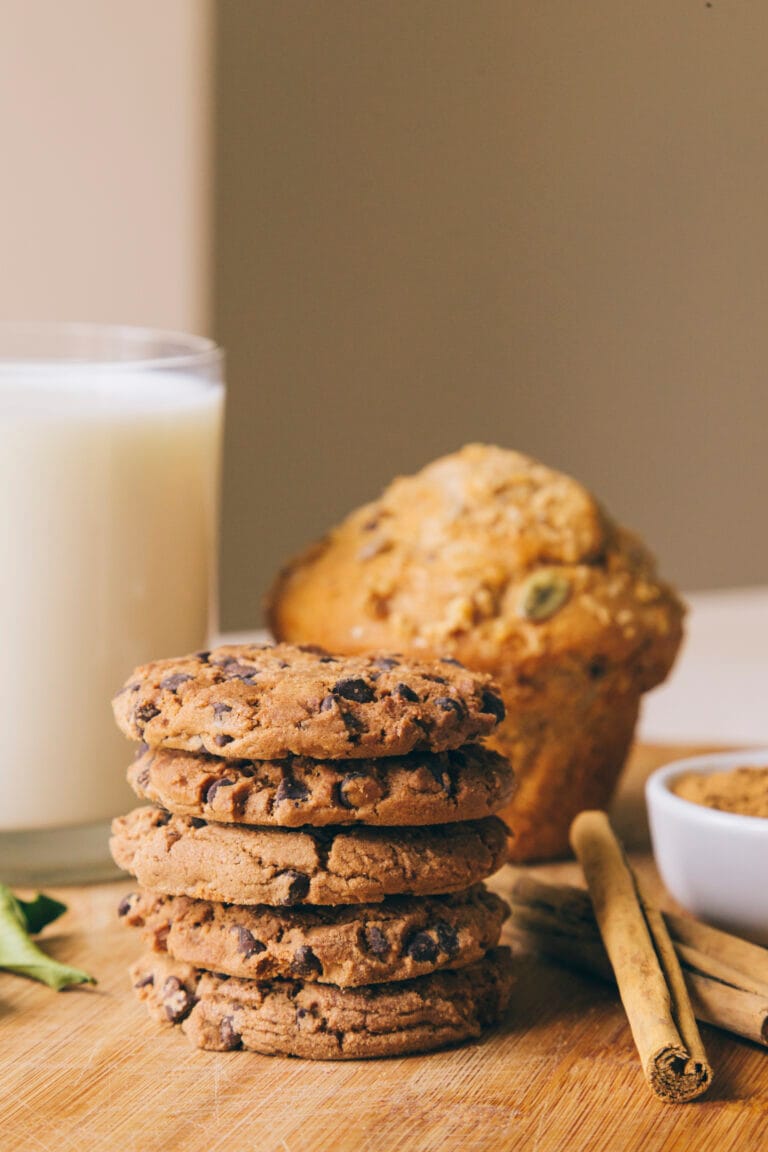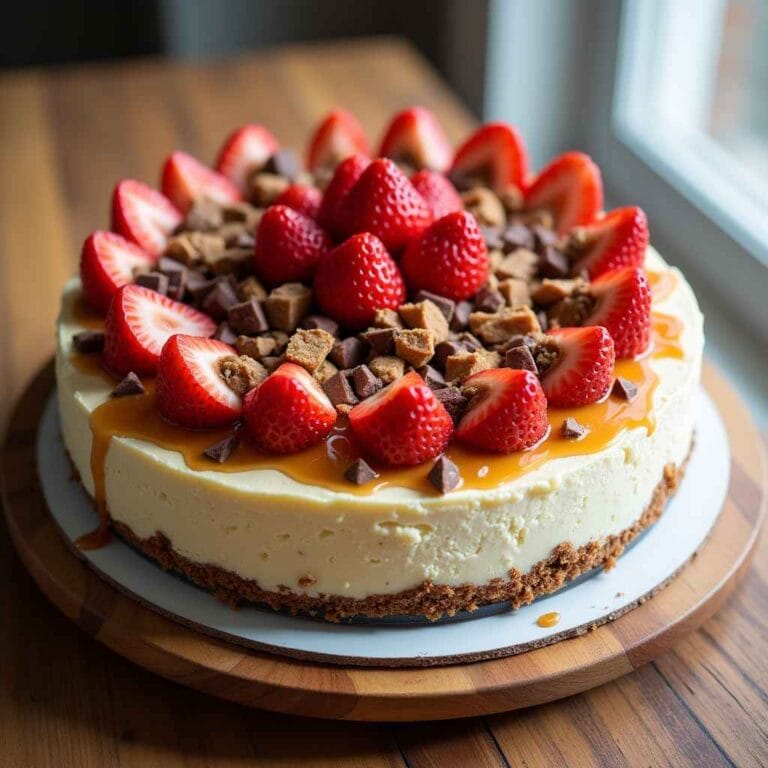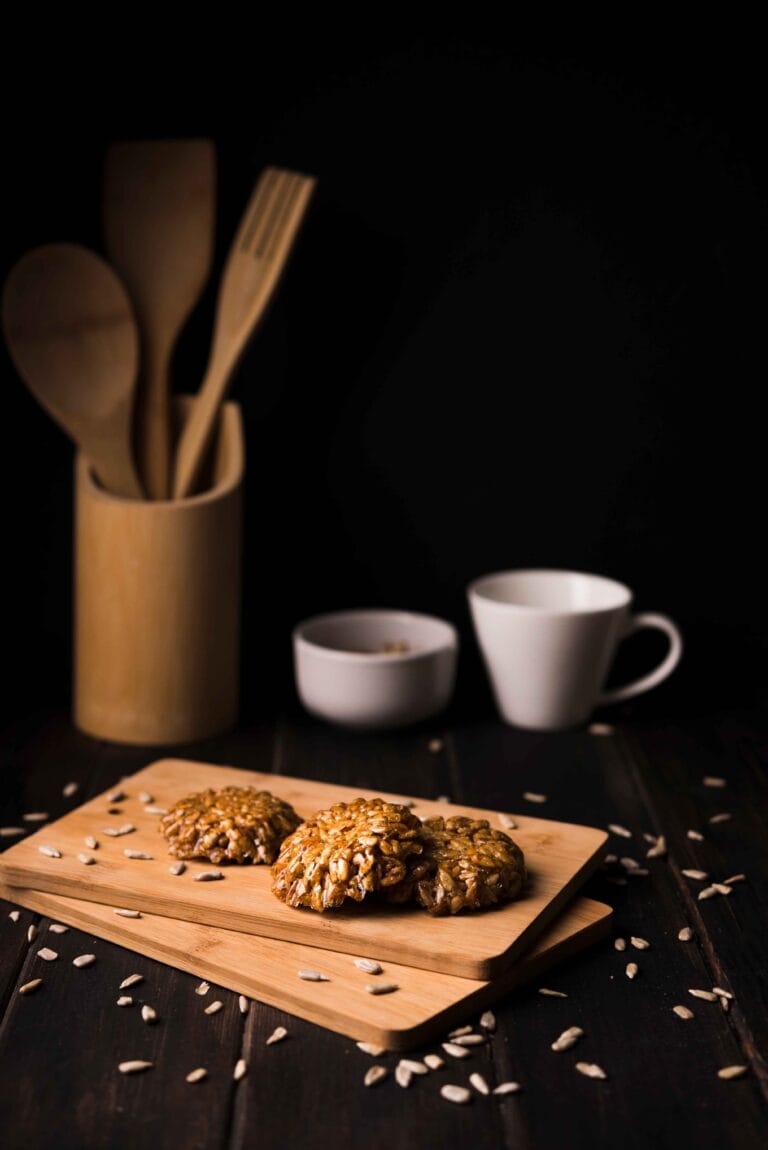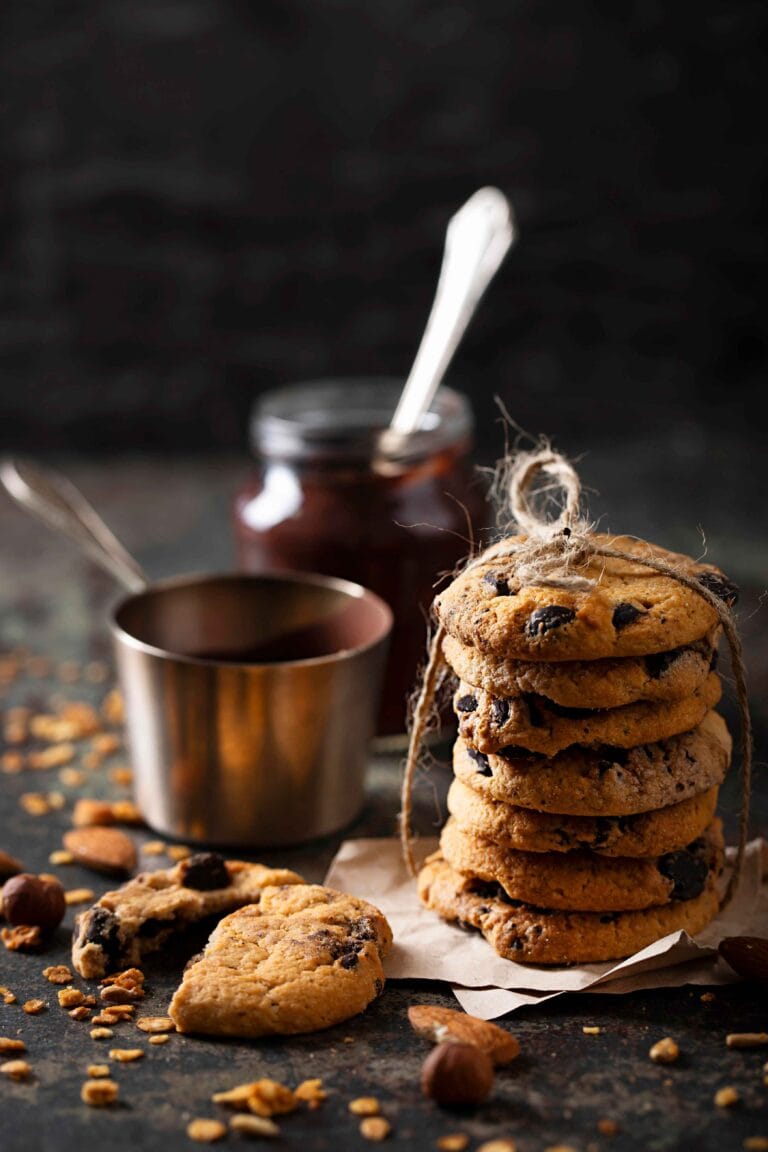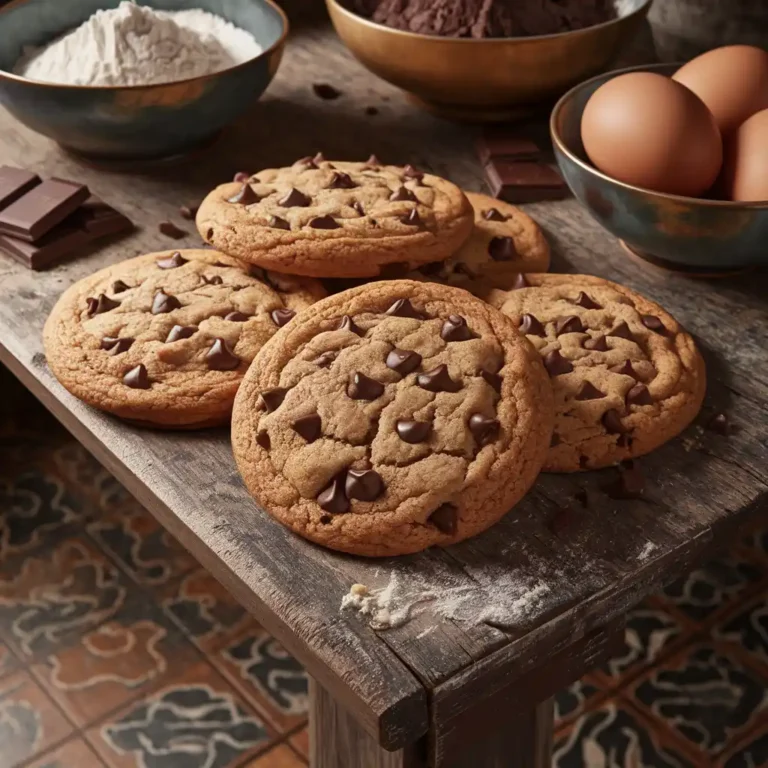Can I Use Protein Powder Instead of Flour for Cookies?
In recent years, protein powders have gained immense popularity not just as a fitness supplement but also as a versatile ingredient in everyday cooking and baking. Many home bakers wonder: can you replace flour with protein powder when making cookies? The answer is yes—but it requires a little finesse to get the texture and taste just right.
Swapping out flour for protein powder offers several benefits. Whether you’re looking to increase your daily protein intake, reduce carbohydrates, or create a gluten-free treat, protein powder can serve as an excellent alternative. However, it’s important to note that protein powder behaves differently from traditional flour due to its lack of gluten and higher protein content. This means your cookies might turn out differently in terms of structure, softness, and chewiness.
This article will guide you through the benefits of using protein powder, how to make the swap successfully, the best types of protein powders for baking, a detailed recipe, and troubleshooting tips for the perfect protein-packed cookies.
Protein cookies are a satisfying and filling snack.
Why Choose Protein Powder for Cookies?
Replacing traditional flour with protein powder in cookies offers a variety of advantages. Here are some key reasons why you might opt for this substitution:
- Boosted Nutritional Profile:
- Protein powder enhances the protein content of your cookies, making them more satiating and suitable for those aiming to meet their daily protein intake goals.
- High-protein cookies are great for post-workout snacks or as a healthier treat option.
- Lower Carbohydrate Content:
- Traditional wheat flour is carbohydrate-dense, whereas protein powder reduces the carbohydrate load, making it ideal for low-carb or keto diets.
- Gluten-Free Baking Alternative:
- Protein powder is a natural choice for those with gluten sensitivities or celiac disease when used in combination with other gluten-free ingredients.
- Versatility in Flavors:
- Many protein powders come in various flavors, such as vanilla, chocolate, or peanut butter, which can add unique tastes to your cookies without needing extra flavorings.
- Customizable Sweetness:
- Protein powders often have a touch of sweetness, especially if they contain stevia or other natural sweeteners, which can help reduce the sugar needed in your recipe.
Types of Protein Powders and Their Properties
Not all protein powders are created equal, and the type you choose will affect the texture and flavor of your cookies. Here’s a breakdown:
- Whey Protein:
- Whey protein is derived from milk and is known for its light texture and high absorbency.
- Best for chewy and soft cookies due to its ability to hold moisture.
- Works well with chocolate chip, oatmeal, or peanut butter cookie recipes.
- Casein Protein:
- Also derived from milk, casein protein tends to create denser cookies because it forms a thicker dough.
- Great for recipes where a firmer texture is desired, such as sugar cookies or shortbread.
- Plant-Based Proteins:
- Options like pea, rice, or hemp protein are ideal for vegans or those avoiding dairy.
- These powders can create a slightly grainy texture, so they are best combined with almond flour or another gluten-free alternative for better consistency.
- Collagen Protein:
- While not as common for baking, collagen protein can add elasticity and softness to cookies.
- Ideal for those seeking additional skin, hair, or joint health benefits.
The Challenges of Using Protein Powder in Cookies
While there are benefits, it’s important to note that protein powder is not a direct substitute for flour and presents some challenges:
- Dryness:
Protein powder lacks gluten, which helps retain moisture, so cookies can end up dry if not adjusted properly.
Solution: Add extra fats or liquids such as butter, coconut oil, or milk to combat dryness. - Texture:
Overusing protein powder can make cookies dense or tough.
Solution: Use a mix of protein powder with almond flour, oat flour, or coconut flour for a lighter result. - Flavor Overload:
Strongly flavored protein powders can overpower other ingredients.
Solution: Balance flavors by choosing unflavored or subtly flavored powders.
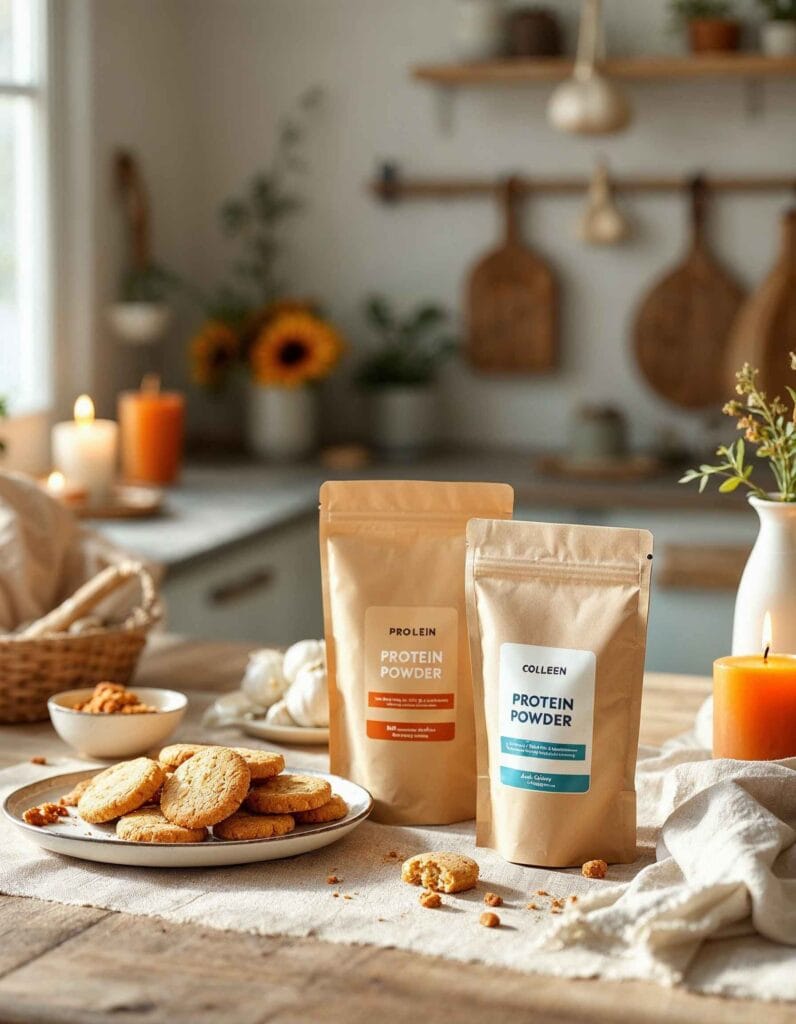
Understanding Protein Powder’s Structure vs. Flour
To successfully replace flour with protein powder, it’s essential to understand the differences in their structures and properties:
- Protein Content:
- Flour contains carbohydrates and minimal protein, while protein powder has a much higher protein concentration.
- High protein content can lead to dense, dry baked goods if not balanced with moisture-rich ingredients.
- Lack of Gluten:
- Gluten in flour provides elasticity and structure to cookie dough, giving cookies their soft and chewy texture.
- Protein powder lacks gluten, so you’ll need to include binders like eggs, nut butter, or mashed bananas.
- Absorbency:
- Protein powder absorbs more liquid than flour, requiring you to increase the amount of liquids in the recipe to prevent the dough from becoming too thick.
Proportions and Combinations for Flour Substitution
When replacing flour with protein powder, the substitution ratio and ingredient combinations are critical. Here are some tips:
- Partial Replacement:
- Replace 25%–50% of the flour in your cookie recipe with protein powder for better results. This ensures the cookies retain some of their traditional texture while adding a protein boost.
- 100% Replacement:
- If you’re substituting flour entirely with protein powder, mix it with other alternatives like almond flour or coconut flour to balance moisture and texture. A good starting point is:
- 1 cup protein powder
- 1/4 cup almond flour
- 1/4 cup coconut flour
- If you’re substituting flour entirely with protein powder, mix it with other alternatives like almond flour or coconut flour to balance moisture and texture. A good starting point is:
- Add Binding Agents:
- To prevent crumbly cookies, add ingredients like:
- Eggs: A great source of structure and moisture.
- Nut Butters: Adds richness and acts as a binder.
- Mashed Bananas or Applesauce: Works well in recipes where a fruity flavor complements the cookie.
- To prevent crumbly cookies, add ingredients like:
- Increase Liquids:
- Add an extra 2–3 tablespoons of liquid (milk, water, or oil) to the dough to counteract the drying effect of protein powder.
Modifying Your Recipe for Success
Here’s how to adapt your recipe when using protein powder:
- Adjust Sweetness:
Protein powders are often pre-sweetened. If your protein powder is flavored, reduce the sugar in the recipe by 1–2 tablespoons to avoid overly sweet cookies. - Bake at Lower Temperatures:
Protein powder tends to brown faster than flour, so bake your cookies at 325°F (160°C) instead of 350°F (175°C) to prevent overbrowning or burning. - Chill the Dough:
Protein powder can make dough stickier than flour-based doughs. Chilling the dough for 15–30 minutes before shaping it can make handling easier. - Include Mix-Ins:
Add ingredients like chocolate chips, nuts, or dried fruits for extra flavor and texture, which help mask any potential grittiness from the protein powder.
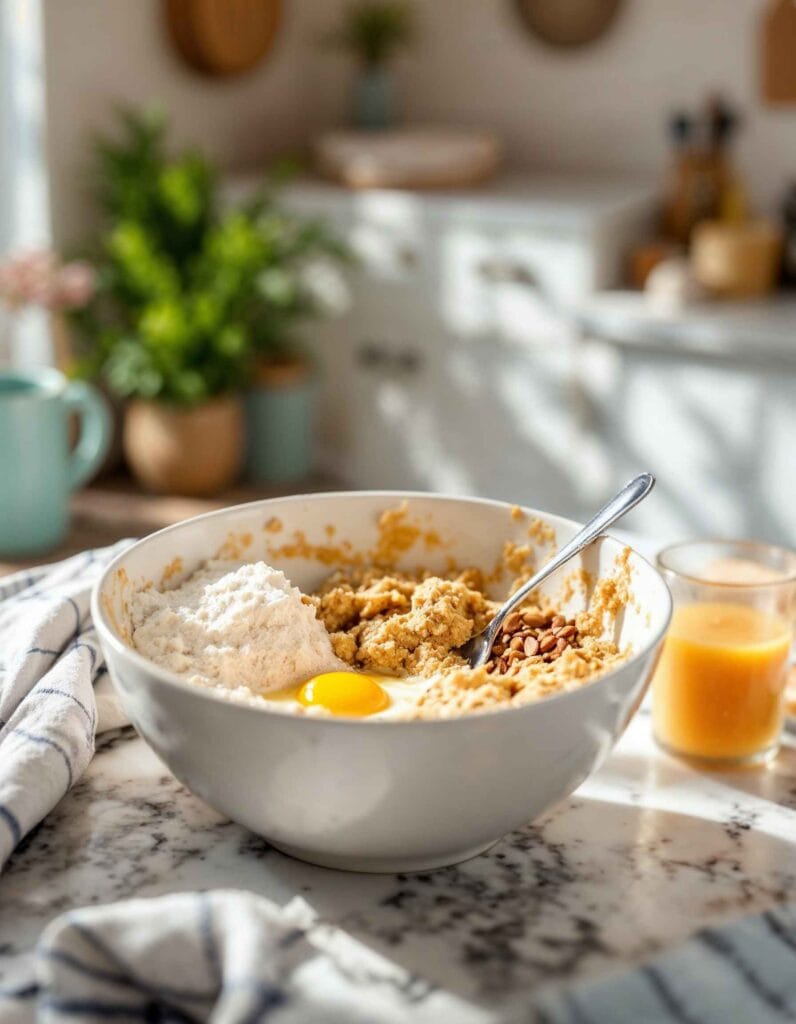
Protein-Packed Cookie Recipe
Here’s a detailed, foolproof recipe to make cookies using protein powder instead of flour. This recipe creates chewy, delicious cookies that are high in protein and low in carbs.
Ingredients:
- Dry Ingredients:
- 1 cup protein powder (whey or plant-based works best)
- 1/4 cup almond flour (optional, for better texture)
- 1/4 cup unsweetened cocoa powder (optional, for chocolate flavor)
- 1/2 teaspoon baking powder
- 1/4 teaspoon baking soda
- Pinch of salt
- Wet Ingredients:
- 1/4 cup unsalted butter or coconut oil, melted
- 1/3 cup granulated sweetener (sugar, stevia, or erythritol)
- 1 large egg
- 1 teaspoon vanilla extract
- 2–3 tablespoons milk or almond milk (to adjust dough consistency)
- Optional Mix-Ins:
- 1/4 cup chocolate chips, nuts, or dried fruits
Step-by-Step Preparation:
Prepare the Dry Ingredients
- In a large mixing bowl, whisk together:
- Protein powder
- Almond flour (if using)
- Baking powder
- Baking soda
- Salt
- Cocoa powder (if desired for chocolate cookies)
- Stir until all ingredients are evenly combined to prevent lumps.
Combine the Wet Ingredients
- In a separate bowl, whisk together:
- Melted butter or coconut oil
- Granulated sweetener
- Egg
- Vanilla extract
- Milk (start with 2 tablespoons and adjust as needed)
- Mix until smooth and creamy.
Mix the Dough
- Gradually add the dry ingredients to the wet mixture, stirring until fully combined. The dough will be thick and slightly sticky.
- If the dough feels too dry, add 1 more tablespoon of milk. If it’s too wet, sprinkle in a little more protein powder.
Add Mix-Ins (Optional)
- Fold in your choice of chocolate chips, nuts, or dried fruits for added texture and flavor.
Chill the Dough
- Place the dough in the refrigerator for 15–30 minutes. This step helps firm up the dough, making it easier to shape into cookies.
Shape the Cookies
- Preheat your oven to 325°F (160°C) and line a baking sheet with parchment paper.
- Scoop out dough using a tablespoon or cookie scoop, then roll it into balls. Flatten slightly with your palm or the back of a spoon, as protein powder cookies don’t spread much while baking.
Bake the Cookies
- Place the cookies on the prepared baking sheet, spacing them about 1 inch apart.
- Bake for 8–12 minutes, depending on your desired texture:
- 8 minutes for softer cookies
- 12 minutes for firmer cookies
- Remove from the oven and let the cookies cool on the baking sheet for 5 minutes before transferring them to a wire rack to cool completely.
Serving Suggestions
- These cookies pair perfectly with a glass of almond milk or a protein shake for a nutritious snack.
- Store leftovers in an airtight container at room temperature for up to 3 days or freeze them for longer storage.
detailed recipe for protein-packed cookies.
Common Problems When Baking with Protein Powder
Protein powder cookies can be tricky if you’re new to this substitution. Here are the most common challenges and how to fix them:
Problem 1: Cookies Turn Out Too Dry
Why It Happens: Protein powder absorbs more moisture than flour, leading to overly dry cookies.
How to Fix It:
- Increase the liquid in your recipe by adding extra milk, water, or even yogurt. Start with 1–2 additional tablespoons.
- Use ingredients that help retain moisture, like mashed bananas, applesauce, or nut butter.
- Avoid overbaking. Protein powder cookies need less time in the oven than traditional flour-based cookies.
Problem 2: Cookies Are Dense or Tough
Why It Happens: Protein powder lacks gluten, so cookies can feel heavy if too much is used.
How to Fix It:
- Limit the amount of protein powder to no more than 50% of the total flour substitution unless combined with almond or oat flour.
- Add leavening agents like baking powder or baking soda to introduce air and lightness.
- Mix the dough gently. Overmixing can create toughness in protein-heavy cookies.
Problem 3: Cookies Have a Gritty or Powdery Texture
Why It Happens: Certain protein powders, especially plant-based ones, can leave a grainy feel.
How to Fix It:
- Opt for whey protein or a finely-milled plant-based protein powder to reduce grittiness.
- Balance protein powder with almond flour or oat flour to smooth out the texture.
- Mix wet ingredients thoroughly to ensure even hydration of the protein powder.
Problem 4: Cookies Lack Flavor
Why It Happens: Protein powders often have a bland or artificial taste that can overpower the cookies.
How to Fix It:
- Use flavored protein powders (e.g., vanilla, chocolate) to enhance taste.
- Incorporate spices like cinnamon, nutmeg, or cocoa powder.
- Add mix-ins like chocolate chips, dried fruits, or nuts to create layers of flavor.
Advanced Tips for Baking with Protein Powder
- Choose the Right Sweetener:
Protein powders can make cookies slightly bitter. Use natural sweeteners like honey, maple syrup, or stevia to balance the taste. For keto-friendly recipes, try erythritol or monk fruit sweetener. - Experiment with Fat Sources:
Fat adds richness to cookies. Replace butter with coconut oil for a dairy-free option or nut butter for an added flavor boost. - Try Flavor Pairings:
- Chocolate protein powder + peanut butter = Peanut butter cup cookies
- Vanilla protein powder + cinnamon = Snickerdoodle cookies
- Unflavored protein powder + lemon zest = Zesty lemon cookies
- Bake in Small Batches:
Protein powder cookies can be temperamental. Bake a small test batch first to adjust sweetness, moisture, or baking time if needed. - Cool Cookies Properly:
Let cookies cool on the baking sheet for a few minutes before transferring them to a rack. This helps them firm up and prevents breaking.

Ideas for Customizing Your Protein Cookies
- Add Superfoods:
- Chia seeds, flaxseeds, or hemp hearts for a nutritional boost.
- Experiment with Flavors:
- Add a splash of almond, peppermint, or coconut extract for unique tastes.
- Switch Up the Protein Powder:
- Try mixing two types of protein powder (e.g., whey and plant-based) for the best of both worlds.
Frequently Asked Questions (FAQs)
Can I Use Protein Powder Instead of Flour in Cookies?
Yes, you can use protein powder instead of flour in cookies, but the substitution requires careful adjustments. Protein powder lacks gluten, which provides structure, so your cookies might have a different texture compared to those made with traditional flour. For the best results, consider replacing 25–50% of the flour with protein powder rather than substituting it completely. If you’re going for a 100% flour-free recipe, you’ll need to balance it with other ingredients like almond flour, coconut flour, or additional binding agents.
How Does Protein Powder Affect Baking?
Protein powder significantly affects the texture, moisture, and structure of baked goods because of its unique properties:
- Texture: Without gluten, baked goods made with protein powder can turn out dense or crumbly if not balanced with other ingredients.
- Moisture: Protein powder absorbs more liquid than flour, making cookies prone to dryness. Adding extra liquids like milk or yogurt can prevent this.
- Browning: Protein powder browns faster than flour, so it’s important to bake at a slightly lower temperature (around 325°F/160°C) to avoid burning.
How Much Protein Powder in Place of Flour?
The amount of protein powder you can use in place of flour depends on the recipe and desired outcome. A good rule of thumb is:
- Replace 25%–50% of the total flour with protein powder for a protein boost while maintaining traditional cookie texture.
- For a completely flour-free recipe, use 1 cup of protein powder but balance it with other ingredients like 1/4 cup almond flour or coconut flour to create a dough-like consistency.
How Do I Substitute Protein Powder in Baking?
Here’s how to substitute protein powder in baking, especially for cookies:
- Start Small: Replace only a portion of the flour (e.g., 1/3 cup protein powder for every 1 cup of flour) if it’s your first time. Gradually increase the proportion in subsequent attempts.
- Adjust Liquids: Protein powder absorbs more liquid, so add extra milk, water, or oil to the dough to prevent dryness.
- Add Binders: Since protein powder lacks gluten, include eggs, mashed bananas, or nut butter for structure and moisture.
- Lower Baking Temperature: Bake at 325°F (160°C) instead of 350°F (175°C) to prevent overbrowning.
Conclusion
Substituting protein powder for flour in cookies is an excellent way to boost their nutritional value, reduce carbs, and cater to specific dietary needs like gluten-free or keto lifestyles. While protein powder requires some adjustments to traditional baking recipes, understanding its unique properties ensures that your cookies turn out delicious every time. Experiment with different protein powders, ratios, and flavor combinations to discover the perfect protein-packed cookie for your taste.


